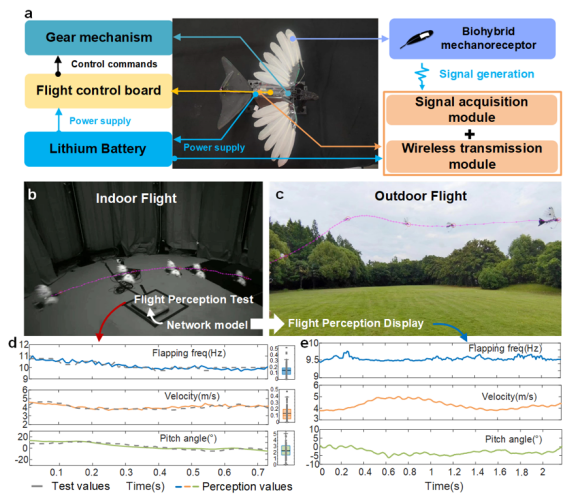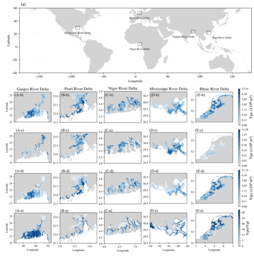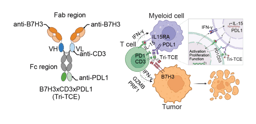Nature's Flight Sense: The Bio-Mechanical Perception with Embodied AI Insights
Published in Electrical & Electronic Engineering
Biomimetics, the science of emulating nature to solve human problems, has taken flight in recent years, particularly in the field of robotics. By studying the natural world, engineers have been able to create robots that mimic the movements and behaviors of animals, including birds. This approach not only leads to more efficient and versatile robots but also provides insights into the fundamental principles of biology.
One of the most significant challenges in creating biomimetic robots is replicating the embodied perception systems that allow animals to interact with their environment. In the case of birds, this involves integrating tactile and proprioceptive sensory systems linked to their wings. These systems enable birds to detect momentary pressure and vibrations, perceive airflow velocity, and adjust their posture and movement accordingly.
In a recent study, Prof. Zhimiao Yan and colleagues at Shanghai Jiao Tong University introduced an avian-inspired embodied perception approach for biohybrid flapping-wing robots. This approach leverages the natural properties of feathers and integrates them with flexible piezoelectric materials to create a low-weight, accurate perception system.

The cornerstone of this system is the feather-piezoelectric mechanoreceptor, which utilizes the unique vibration modes and frequencies of feathers under varying flow velocities and directions. The adjacent vibratory feathers operate as coupled oscillators, colliding and engendering nonlinear interactions that produce distinctive voltage signals on the piezoelectric film.
This mechanoreceptor not only detects airflow velocity and wing flapping frequency but also senses pitch angle via airflow direction and detects wing morphology through feather collisions. The integration of multiple sensory perceptions using functional materials and expanding multifunctional structure development is crucial for flapping-wing robots (FWRs), especially considering the stringent payload weight limitations.
To achieve high-precision recognition of the robot's motion patterns, the researchers employed convolutional neural networks (CNNs) with the grey wolf optimizer (GWO). This combination allowed for the regression recognition of voltage signals under different flapping frequencies, headwind speeds, and pitch angles. The trained network adeptly recognizes temporally varying motion patterns, enabling real-time classification and visualization of flapping frequency, wind speed, pitch angle, and wing shape. This biohybrid embodied perception design holds potential for advancing the development of more lightweight, integrated, stealthy, and dexterous biomimetic flapping-wing air vehicles.
To validate the feasibility of the bio-hybrid perception recognition in practical flight contexts, the researchers crafted a feathered flapping-wing aircraft capable of untethered flight. The aircraft incorporated various modules, including a gear-driven mechanism, flight control board, piezoelectric signal acquisition, and high-impedance wireless transmission modules. Through indoor and outdoor flight tests, the researchers validated the accuracy of the embodied sensory identification. The comparison between motion captured values and embodied perceived values showed a high degree of concordance, underscoring the robust accuracy of their methodologies.
This research constructs an embodied sensory system with integrated biomechanics in flapping robots, demonstrating significant potential in complex flight control based on sensory feedback, multisensory integration, and in-sensor computing. The biohybrid perception system has potential applications beyond robotics. It can be applied to monitor real bird behaviors, providing new methods for bird monitoring and biological research. With the continuous advancement of artificial intelligence models, multimodal embodied intelligence emerges as an effective design paradigm in the realm of robotics.
Looking ahead, the research will pivot towards the intersecting domains of mechanics, biology, and artificial intelligence. It aims to explore the mechanical explanations behind natural selection, evolution, and the behavior of biological flight, shedding light on the profound connections between the study of avian flight behavior and neuro-mechanics. Additionally, the research will delve into the complex mechanics of biomimetic flapping-wing aircraft, with a goal to engineer autonomous flapping-wing flyers that possess both environmental awareness and superior maneuverability.
Follow the Topic
-
Nature Communications

An open access, multidisciplinary journal dedicated to publishing high-quality research in all areas of the biological, health, physical, chemical and Earth sciences.
Related Collections
With Collections, you can get published faster and increase your visibility.
Women's Health
Publishing Model: Hybrid
Deadline: Ongoing
Advances in neurodegenerative diseases
Publishing Model: Hybrid
Deadline: Mar 24, 2026





Please sign in or register for FREE
If you are a registered user on Research Communities by Springer Nature, please sign in